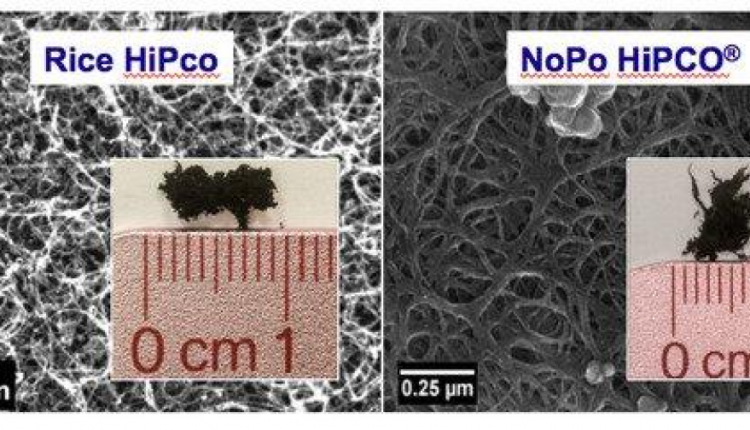
New Nanotube Production Process Can Replace Smalley’s Method
With their remarkable electrical conductivity, exceptional tensile strength and thermal conductivity, carbon nanotubes are valuable to so many areas of technology, including electronics, optics, and composite materials.
The problem faced by researchers is that it is no longer possible to make high quality research samples of single-walled carbon nanotubes using the standard method. That’s because the Carbon Center at Rice University, which used the high-pressure carbon monoxide (HiPco) gas-phase process developed by Nobel Laureate the late Rick Smalley, ceased operation in the mid-2010s. The center divested its remaining HiPco samples to a third-party entity with no definite plans for further production. Since then, the core patents for the HiPco process have expired.
Now a new method of producing carbon nanotubes—the tiny molecules whose incredible physical properties are now used in touchscreen displays, 5G networks and flexible electronics—has been given the green light by researchers, meaning work in this crucial field can continue.
Single-walled carbon nanotubes are among the most attractive nanomaterials for a wide range of applications ranging from nanoelectronics to medical sensors. They can be imagined as the result of rolling a single graphene sheet into a tube.
Their properties vary widely with their diameter, what chemists call chirality—how symmetrical they are—and by how the graphene sheet is rolled.
A collaboration between scientists at Swansea University (Wales, UK), Rice University (USA), Lamar University (USA), and NoPo Nanotechnologies (India) has demonstrated that the latter’s process and material design is a suitable replacement for the Rice method.
Analysis of the Rice “standard” and new commercial-scale samples show that back-to-back comparisons are possible between prior research and future applications, with the newer HiPco nanotubes from NoPo Nanotechnologies comparing very favorably to the older ones from Rice.
These findings will go some way to reassure researchers who might have been concerned that their work could not continue as high-quality nanotubes would no longer be readily available.
Professor Andrew Barron of Swansea University’s Energy Safety Research Institute, said, “Variability in carbon nanotube sources is known to be a significant issue when trying to compare research results from various groups. What is worse is that being able to correlate high quality literature results with scaled processes is still difficult.”
Rice University Smalley group alumni helped start NoPo Nanotechnologies with the aim of updating the HiPco process, and produce what they call NoPo HiPCO® SWCNTs.
Lead author Dr. Varun Shenoy Gangoli said, “It is in the interest of all researchers to understand how the presently available product compares to historically available Rice materials that have been the subject of a great range of academic studies, and also to those searching for a commercial replacement to continue research and development in this field.”
Source: Swansea University
